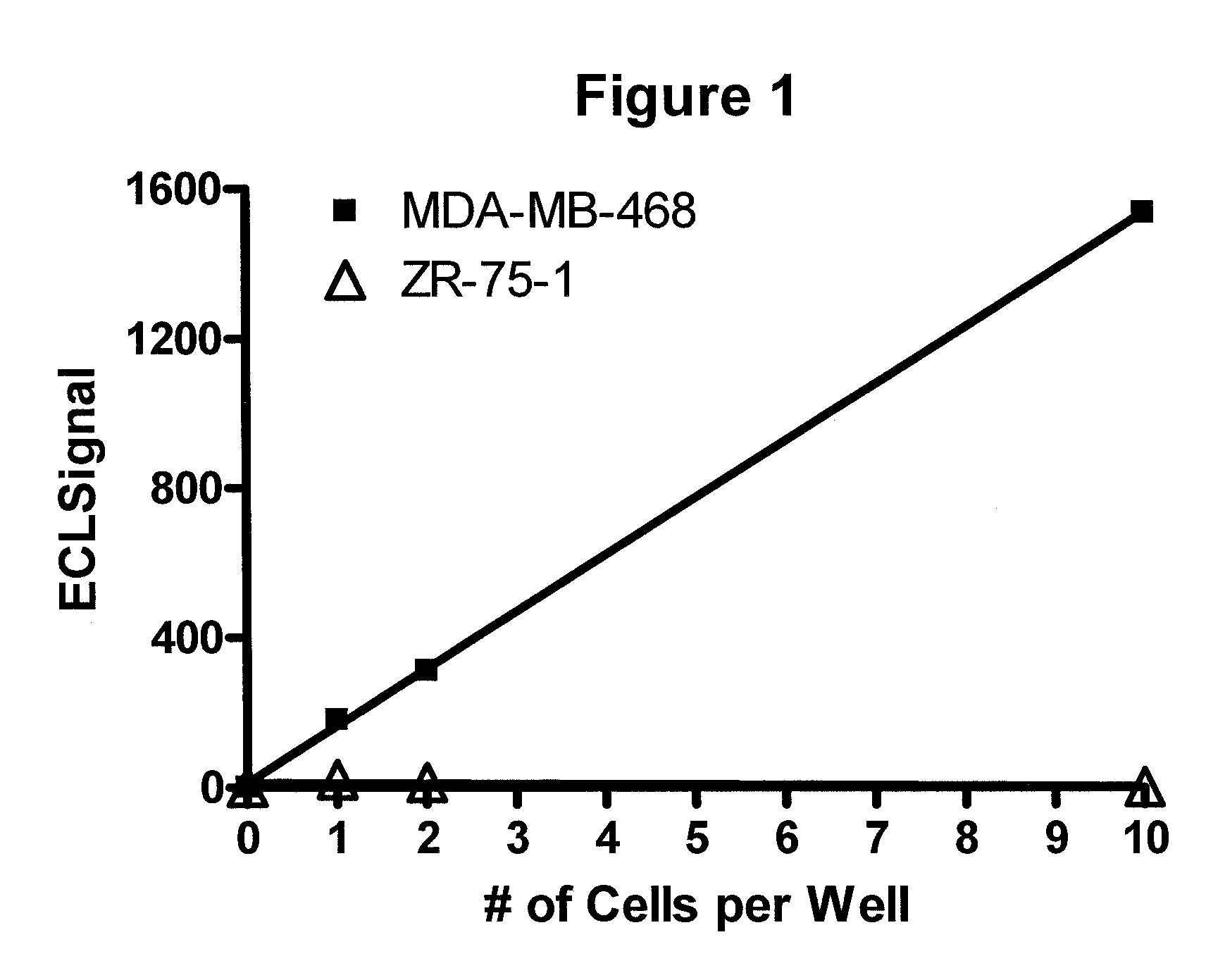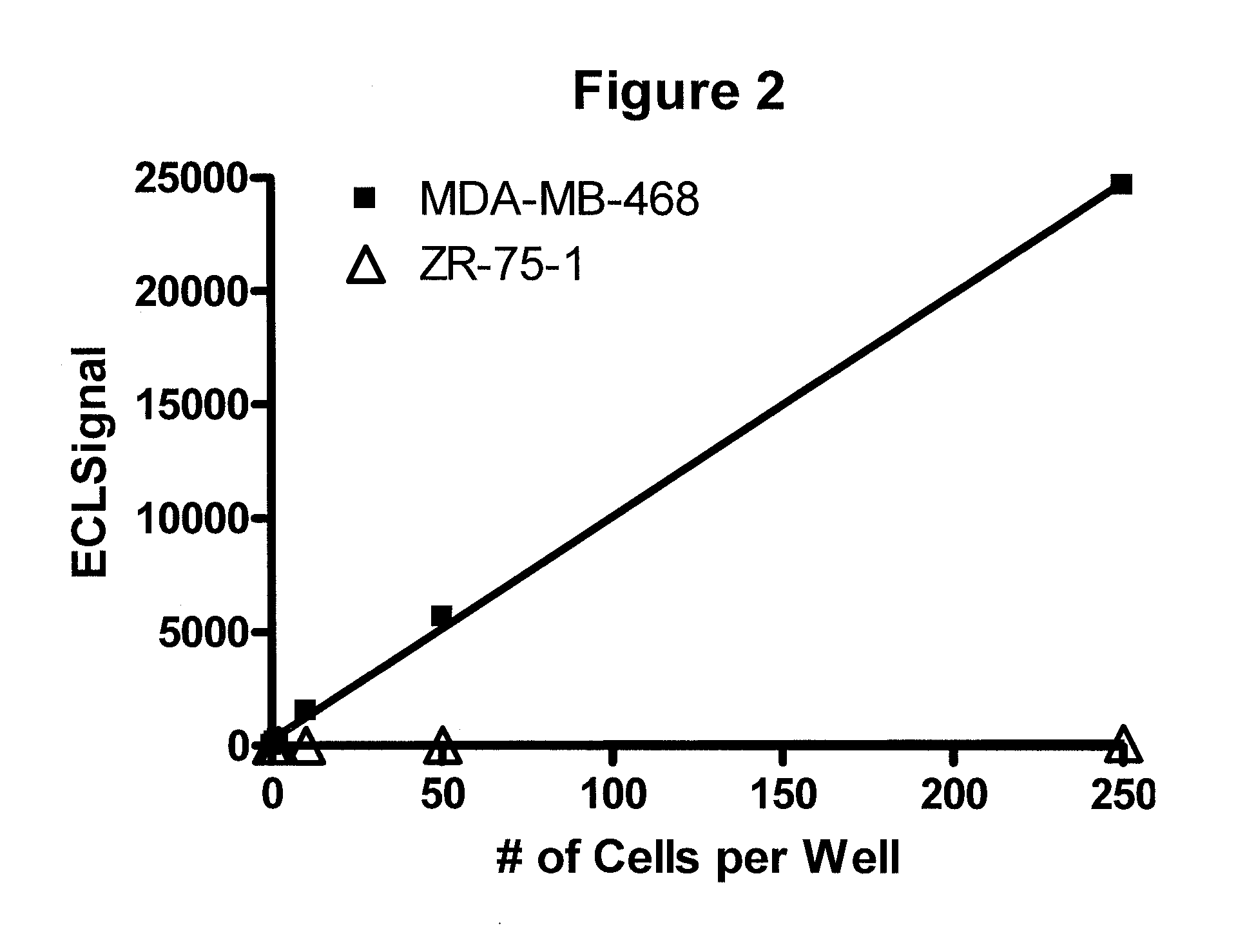Detection of proteins from circulating neoplastic cells
- Summary
- Abstract
- Description
- Claims
- Application Information
AI Technical Summary
Benefits of technology
Problems solved by technology
Method used
Image
Examples
example 1
[0053]A patient with cancer comes into the office and a blood sample is collected in a tube to prevent clotting. Cancer cells are isolated and proteins extracted using a commercially available kit such as Pierce Lysis Buffer and Sigma Lysis Buffer. A ruthenium-labeled rabbit polyclonal antibody against EGFR and a biotinylated polyclonal antibody (also against EGFR) is added and the followed by the addition of a suspension of magnetic beads with avidin attached and then a solution containing tripropylamine. An electric current is applied and electrochemiluminescence (ECL) is detected using an ECL detection device such as one commercially available (BioVeris Corporation or Roche Diagnostics). The signal is proportional to the amount of EGFR found in the circulating tumor cells.
example 2
[0054]Methods are as in example 1, except the antibodies are against ERCC1.
example 3
[0055]Methods are as in example 1, except the antibodies are against RRM1
PUM
| Property | Measurement | Unit |
|---|---|---|
| Mass | aaaaa | aaaaa |
| Mass | aaaaa | aaaaa |
Abstract
Description
Claims
Application Information
 Login to View More
Login to View More - R&D
- Intellectual Property
- Life Sciences
- Materials
- Tech Scout
- Unparalleled Data Quality
- Higher Quality Content
- 60% Fewer Hallucinations
Browse by: Latest US Patents, China's latest patents, Technical Efficacy Thesaurus, Application Domain, Technology Topic, Popular Technical Reports.
© 2025 PatSnap. All rights reserved.Legal|Privacy policy|Modern Slavery Act Transparency Statement|Sitemap|About US| Contact US: help@patsnap.com


